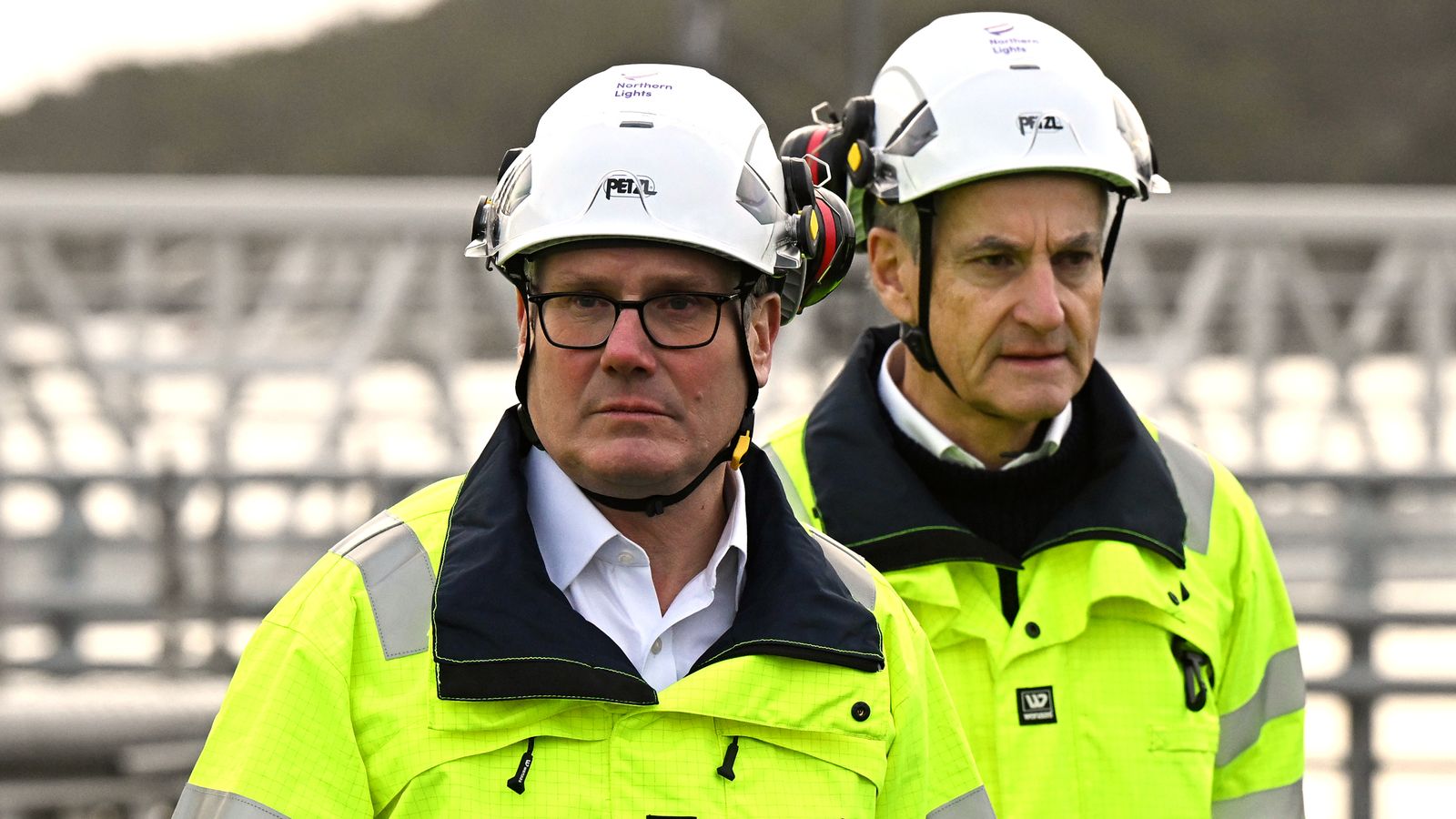U.K News
Keir Starmer has declared war on £100m HS2 bat shed – but has he got a solution?

The Bat Tunnel Controversy: A Test of Sir Keir Starmer’s Planning Reforms
Sir Keir Starmer, the UK Prime Minister, has found himself at the center of a heated controversy over a peculiar construction project: a kilometre-long, £100 million bat tunnel in Buckinghamshire. This massive structure, designed to protect a rare species of bat from future high-speed trains, has become a symbol of what Starmer and his government argue is a broken planning system. The tunnel, part of the HS2 railway project, is set to be completed by 2027, but its sheer cost and perceived absurdity have sparked a wider debate about the balance between environmental protections and infrastructure development. The question now is whether Starmer’s government can find a way to prevent such costly structures in the future without triggering a political and environmental backlash.
The Bat Tunnel: A £100 Million Solution to a Rare Problem
The bat tunnel is no ordinary construction project. It is a response to the Conservation of Habitats and Species Regulations 2017, which mandates the protection of rare species, such as the Bechstein’s bat, whose habitat is threatened by the HS2 rail line. The tunnel’s purpose is to insulate the railway tracks and prevent the bats from being harmed by the high-speed trains. HS2 executives explored alternative solutions, such as digging a tunnel, using noise deterrents, or rerouting the line, but these options were deemed either too expensive or insufficient to meet legal requirements. The current shed-like structure was ultimately chosen as the cheapest and most legally compliant solution.
Despite its practical purpose, the tunnel has become a lightning rod for criticism. Starmer has repeatedly condemned it as an emblem of a planning system gone awry, while his Chancellor has vowed that such projects will not happen again. However, government sources concede that no concrete plan has been unveiled to prevent similar structures in the future. This lack of clarity has left experts and industry figures skeptical about the government’s ability to address the issue effectively.
The Government’s Dilemma: Reforming Planning Laws Without Alienating Environmentalists
The government’s growth agenda hinges on reforming the planning system to unlock infrastructure development and stimulate economic growth. Recent announcements from Downing Street have emphasized the need to tackle "blockers" that stand in the way of progress. However, the challenge lies in finding a solution that satisfies both economic and environmental interests. The proposed compromise—a government-controlled fund where developers pay into a pot to finance wider strategic environmental projects—has been met with lukewarm reception. Lawyers and experts argue that this approach may work for projects affecting the same species and habitats but is less effective for single projects like the bat tunnel.
The alternative—rolling back EU-derived habitat protections—would likely provoke fierce opposition from environmental groups. The RSPB, one of the UK’s largest environmental organizations, has already warned that any attempt to weaken nature laws would be met with resistance. Repealing these protections could also jeopardize the UK’s trade agreements with the EU, as the two sides agreed to maintain a "level playing field" on environmental standards after Brexit. This leaves the government in a difficult position, with no obvious solution that avoids either economic stagnation or environmental harm.
A Growing Divide: Environmentalists vs. Pro-Growth Campaigners
The bat tunnel controversy has exposed a deeper divide between environmentalists and pro-growth campaigners. While environmental groups argue that nature protections are essential to preserving biodiversity, pro-growth advocates contend that these laws are stifling development and economic progress. Sir Keir Starmer’s government is caught in the middle, trying to navigate a path that satisfies both camps. Dan Tomlinson MP, the government’s growth mission champion, has emphasized the need to reduce infrastructure costs while protecting wildlife. However, experts caution that achieving this balance will require careful planning and coordination, which may take years to implement.
Meanwhile, the bat tunnel remains a potent symbol of the challenges ahead. Its completion in 2027 will serve as a reminder of the complexities of balancing economic growth with environmental protections. For Starmer, the tunnel has become a litmus test for his planning reforms. If he fails to deliver a solution that prevents similar projects in the future, it could undermine his government’s growth agenda and hand a political victory to his critics.
Conclusion: A Tricky Road Ahead for Sir Keir Starmer
The bat tunnel controversy highlights the difficult choices facing Sir Keir Starmer’s government as it seeks to reform the planning system. While the government insists that answers will come in future legislation, experts remain doubtful about the feasibility of the proposed solutions. The tension between economic growth and environmental protections is unlikely to ease anytime soon, especially as the UK grapples with the legacy of EU laws and the demands of international trade agreements. For now, the bat tunnel stands as a costly and controversial monument to the challenges of balancing progress and nature. Whether Starmer can find a way to avoid similar controversies in the future remains to be seen.